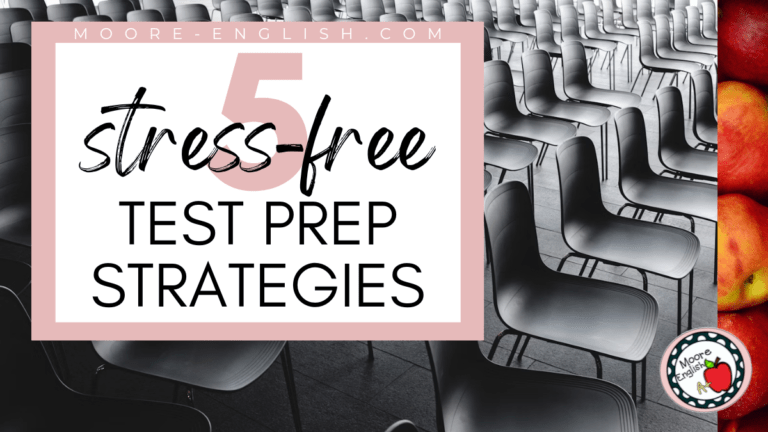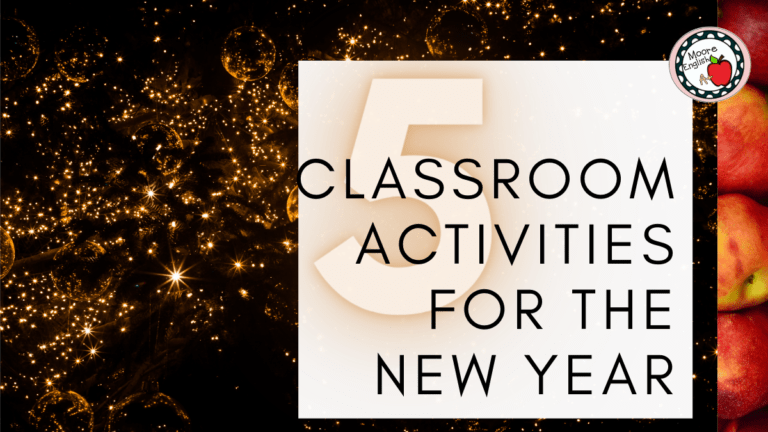Group work? Groan.
At least, that was always my response to group work in high school (and sometimes in college).
However, as a teacher, I value group work for these reasons:
- intentional dialogue leads to internalized material;
- classroom community comes from working together;
- more perspectives lead to increased empathy and compassion;
- group work provides a safe space in which to take academic risks.
Because I always disdained group work as a student, I work hard to make group work meaningful and equitable for my students. I remember all the reasons I loathed group work, and I don’t want any of my students to feel put upon or isolated. For these reasons, I want to share these 7 secrets to successful group work in high school.
This post this post may contain affiliate links. Please read the Terms of Use.
Set the Stage for Success
First, seating matters. When you know that group work is coming, either arrange the room or ask students to arrange the room. Groups should be facing one another. This makes eye contact and dialogue easier but also symbolizes that the group is working toward a common goal. Plus, poor seating is one way that students can become isolated. Small groups can run into all kinds of conflicts, so stop this one before it happens.
Additionally, be intentional about groups. Consider the size of the groups, the needs of the students, prior conflicts and alliances, modifications and accommodations, and language barriers. If you know that a big group project is coming, then start with some “bite size” group work. Bell work, stations, and task cards can all be small opportunities to start students on the path to classroom community.
Similarly, provide students with identifiable group roles. As a student, I did not like this part of group work because I found that the roles did not matter, and I ended up doing all the work anyway. For this reason, it’s important to be clear about group roles and to insist that students maintain their roles. Here are some of the group roles I often assign: speaker, traveler, artist, and writer. There are dozens of variations, but this is a good starting spot.
Establish Clear Expectations
When students start a group project, be clear about what you’re looking for. Identify the desired result, and clearly communicate to students what each group needs to do to achieve that goal. For me, this means every part of a group project comes with a rubric.
To make the rubric tangible for students, provide groups with examples at varying levels of success. Then, ask groups to apply the rubric to each example. Groups can share their scores, and you can quickly correct misunderstandings or misconceptions.
Depending on the duration of a group project, I may also establish clear expectations for absenteeism. For example, if a project lasts 5 days, and a student is gone 3 days, then that student will have to complete the project independently or may have to complete an alternative assignment. This prevents the other group members from being put upon.
Assess Speaking and Listening Skills
Speaking and listening skills are an important and sometimes overlooked part of the CCSS. These standards include establishing norms, roles, and deadlines. In especially long-term projects, teachers can assess the quality and application of each group’s adherence to norms, roles, and deadlines. Teachers can also provide students with an opportunity to reflect on how well they and their peers have collaborated.
Finally, in my classroom, group projects often lead to presentations. When this is the case, I am probably assessing the groups’ speaking skills, but I am also probably assessing the audience’s listening skills. During presentations, I often assign the audience with some kind of listening task: a Google Form, a feedback form, asking questions of the presenters, etc.
Group Work Favorites
- Escape Rooms
- Test Prep Olympics
- Public Speaking Games
- Literary Analysis Stations
- Book Cover Design Project
- Grammar and Vocabulary Games










